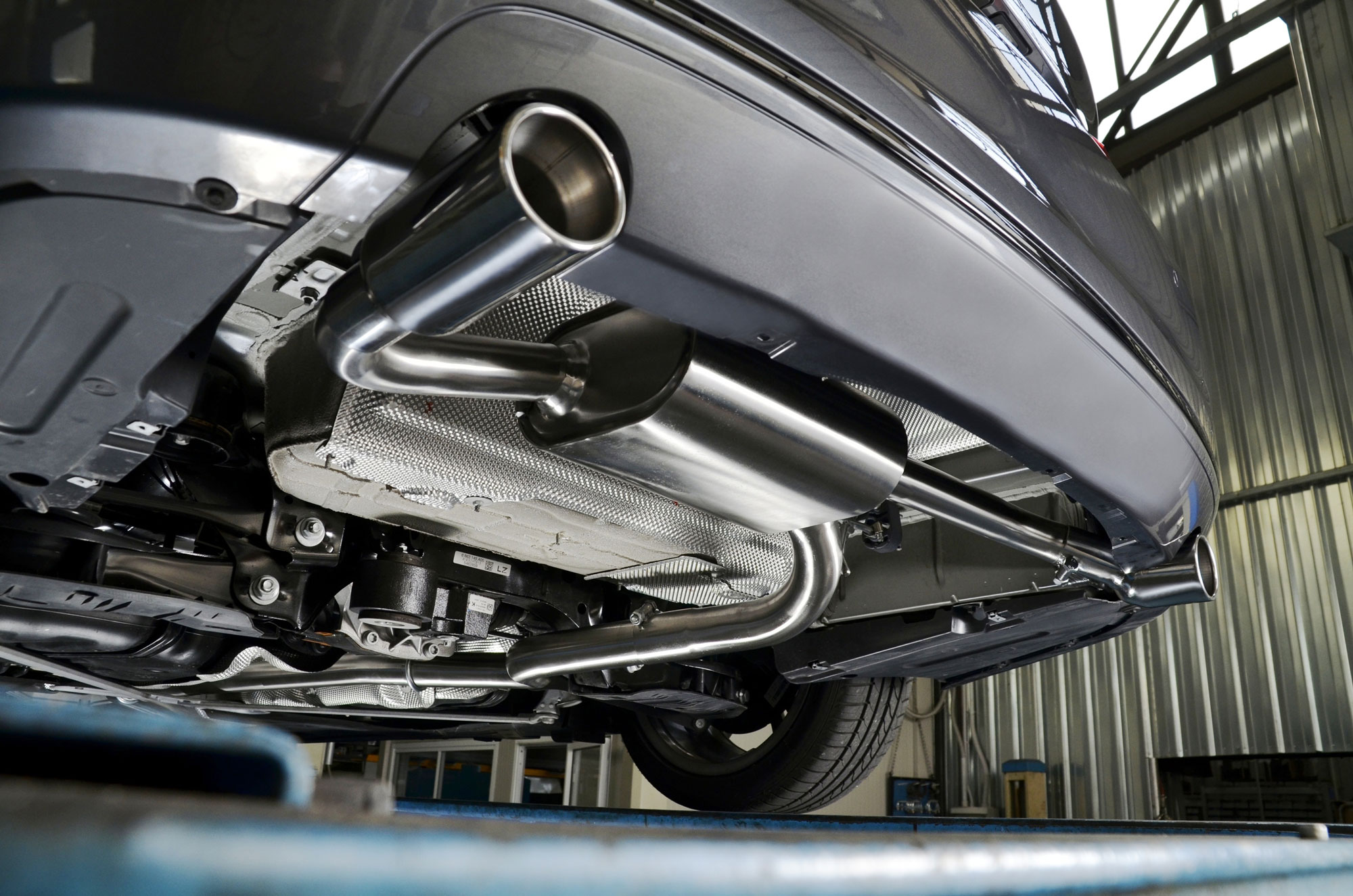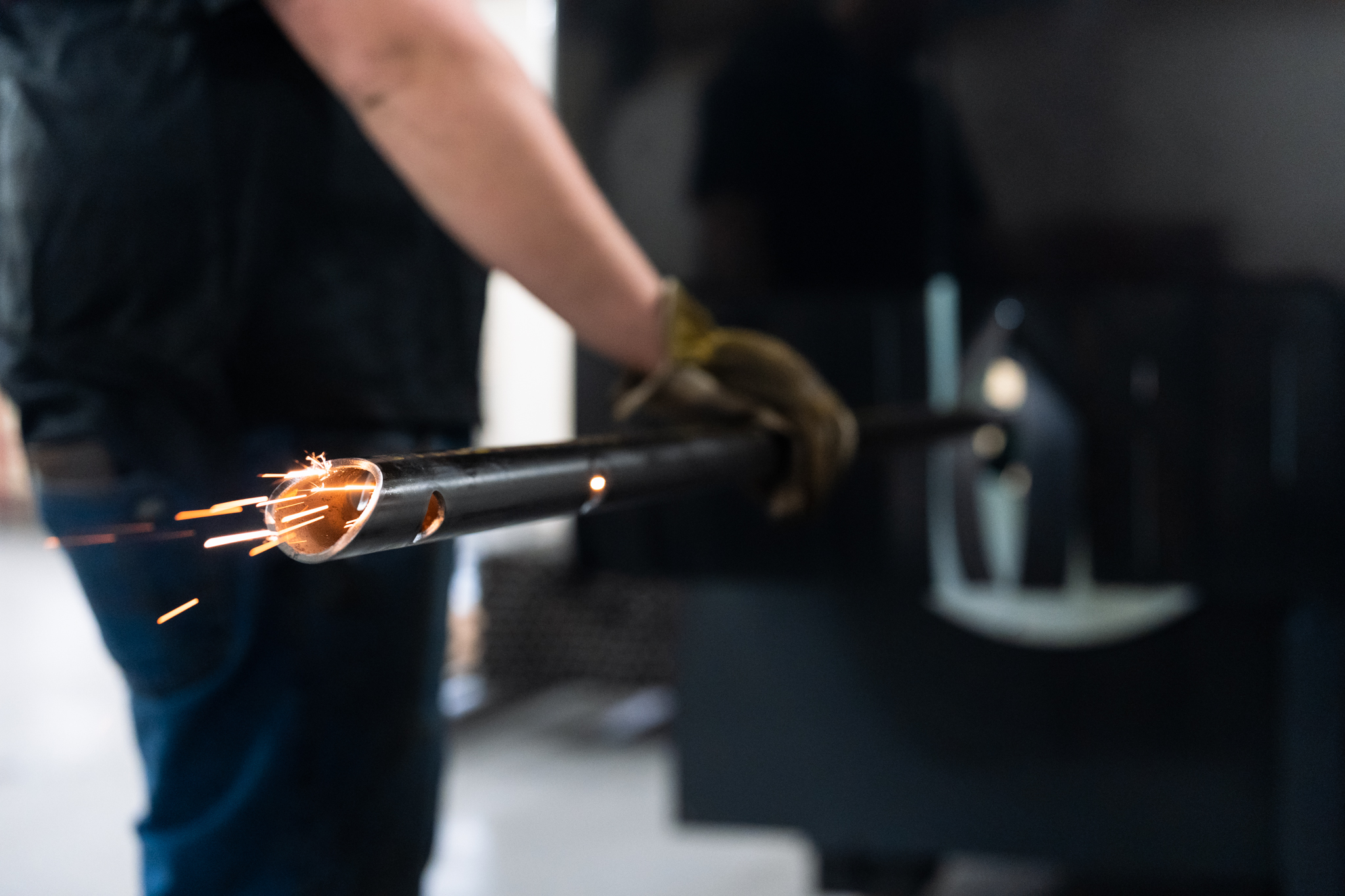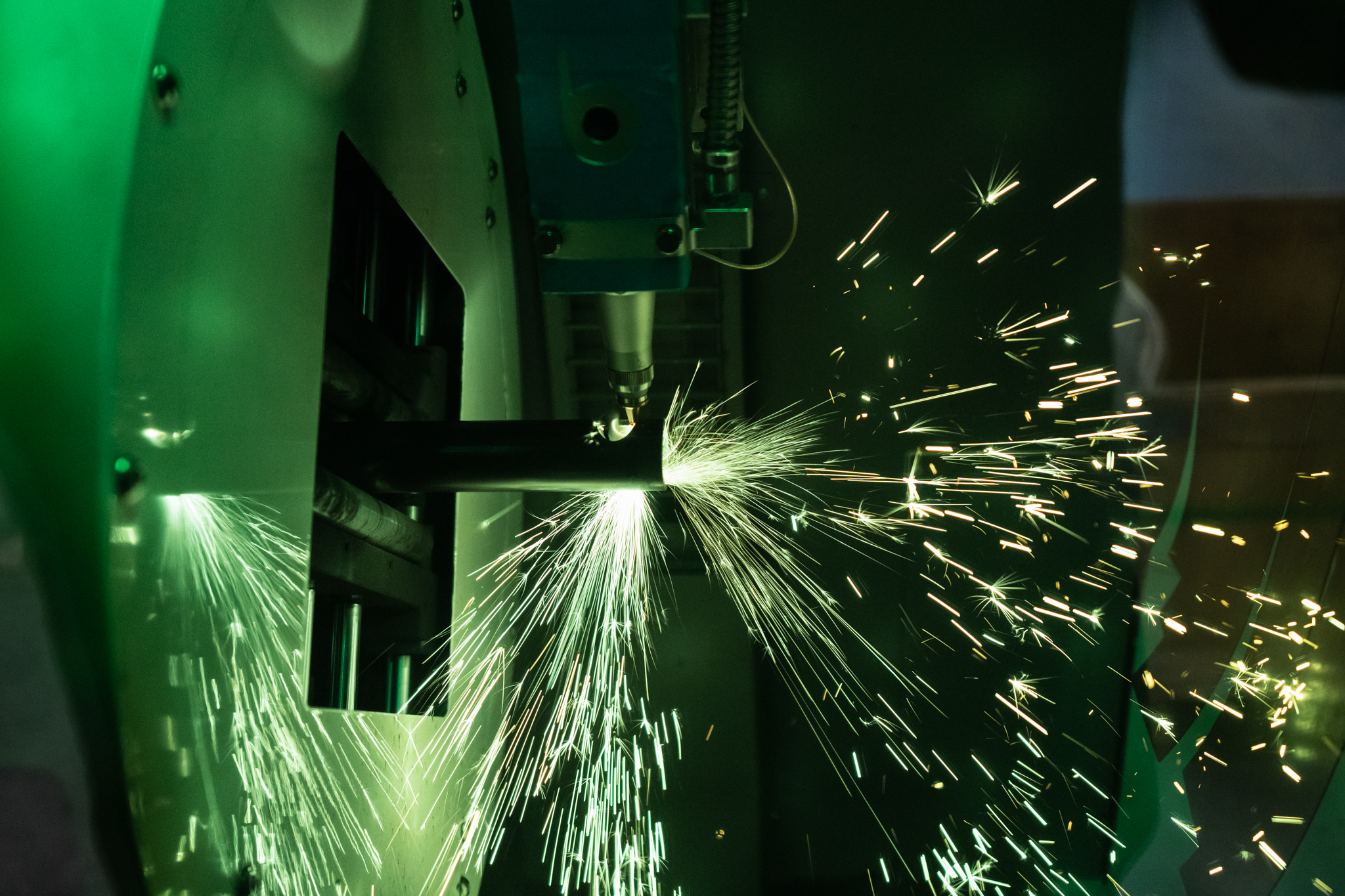In the automotive industry, precision is essential for manufacturing critical components like chassis parts, brackets, and exhaust systems. Exhaust systems, in particular, require intricate designs to efficiently manage emissions and improve vehicle performance. Because of this, fiber laser cutting has become the preferred fabrication method, offering a faster, more accurate way to produce these complex components while reducing costs.
In this blog, we’ll explore how fiber laser cutting is transforming the manufacturing of exhaust systems.

The Importance of Exhaust Systems
Exhaust systems play a critical role in vehicle performance by managing the release of exhaust gasses from an engine. They are made up of several interconnected components, each contributing to the vehicle’s emissions control, noise reduction, and overall engine efficiency:
- Exhaust manifold: This component channels exhaust gasses into a single pipe. The design of the manifold is crucial because it influences how efficiently exhaust gasses are expelled, directly impacting engine performance.
- Catalytic converter: The catalytic converter transforms harmful pollutants (such as carbon monoxide and hydrocarbons) into less harmful emissions like carbon dioxide and water vapor, helping the vehicle meet environmental regulations.
- Oxygen sensors: These sensors monitor oxygen levels in the exhaust and help adjust the engine’s air-to-fuel ratio for optimal combustion and reduced emissions.
- Exhaust pipes: These tubes connect the different parts of the exhaust system—the layout promoting efficient gas flow while maintaining the system’s integrity.
- Muffler: This component reduces the noise generated by the engine’s exhaust. It’s designed with chambers or perforated tubes that bounce sound waves around to cancel out most of the noise.
- Tailpipe: The tailpipe directs the cleaned exhaust gasses away from the vehicle and into the atmosphere. A well-placed tailpipe ensures proper ventilation of gasses without affecting other vehicle components.
Why Do Exhaust Systems Need Precise Fabrication?
In modern vehicle design, precision in exhaust system fabrication is necessary for several reasons:
Performance Optimization
Exhaust systems need to be tailored to specific engines, ensuring that exhaust gasses flow efficiently. Precise cuts and designs are essential for achieving the required flow dynamics.
Compliance with Standards
Exhaust systems must meet stringent emission standards and safety regulations. Poor fabrication can lead to faulty components that can’t control emissions properly or result in mechanical failure.
Durability and Fitment
Poorly fabricated components might not fit properly or wear out prematurely due to misalignment, which can lead to exhaust leaks, engine inefficiency, or excessive noise.

Fiber Laser Benefits
Fiber laser technology has revolutionized the fabrication of exhaust systems, offering a range of benefits that make it the preferred method for cutting and shaping metal components:
High Precision
Fiber lasers use a focused, intense beam of light to produce exceptionally clean and accurate cuts, essential for maintaining the tight tolerances required for exhaust systems. This precision minimizes material distortion, which is crucial for ensuring the performance and durability of exhaust components.
Fast Cutting Speeds
Fiber laser systems operate significantly faster than traditional cutting methods like mechanical sawing or plasma cutting. Its speed is beneficial for high-volume production environments, allowing manufacturers to produce more parts in less time without sacrificing quality.
Intricate Designs
Modern exhaust systems often require complex geometries to fit within increasingly compact engine bays. Fiber lasers excel at cutting intricate shapes with minimal effort.
Minimal Material Waste
The precision of fiber lasers reduces the amount of wasted material, contributing to cost savings. The laser’s narrow kerf (cut width) ensures that the maximum amount of material is used, leaving less scrap behind.
Versatility
Fiber lasers are capable of cutting a variety of metals, including those commonly used in exhaust systems such as high-strength steel, stainless steel, and aluminum. This versatility allows manufacturers to switch between materials easily.
Automated Process
Because fiber laser cutting is automated, it allows for consistent, repeatable results with minimal human intervention. This automation helps manufacturers meet high production quotas while maintaining consistent quality.
Learn more about our fiber laser tube cutting.

Exhaust System Fabrication at McKiney Manufacturing
At McKiney Manufacturing, we combine cutting-edge technology with skilled craftsmanship to produce high-quality exhaust systems. Our advanced fabrication equipment, such as the CNC Mandrel Pipe Bender, CNC Fiber Laser Tube Cutting Machine, and Eagle I/O Tube End Former, ensures precision and efficiency in every project.
- CNC Mandrel Pipe Bender: This machine allows for the precise bending of metal tubes, creating exhaust pipes that fit perfectly within the engine bay without unnecessary stress on the material. The CNC system ensures that every bend is made to exact specifications, reducing the risk of deformities.
- CNC Fiber Laser Tube Cutting Machine: The flexibility of CNC fiber laser technology allows for intricate designs and complex patterns to be cut effortlessly, making it a valuable asset when manufacturing customized exhaust system components.
- Eagle I/O Tube End Former: This equipment forms the ends of metal tubes to ensure a snug fit between exhaust components. Properly formed tube ends are critical for preventing exhaust leaks and ensuring the system operates at peak efficiency.
Our expertise with these advanced technologies means that you can expect McKiney Manufacturing to deliver exhaust systems with the highest level of precision, durability, and performance, making us a trusted partner for exhaust system fabrication.
